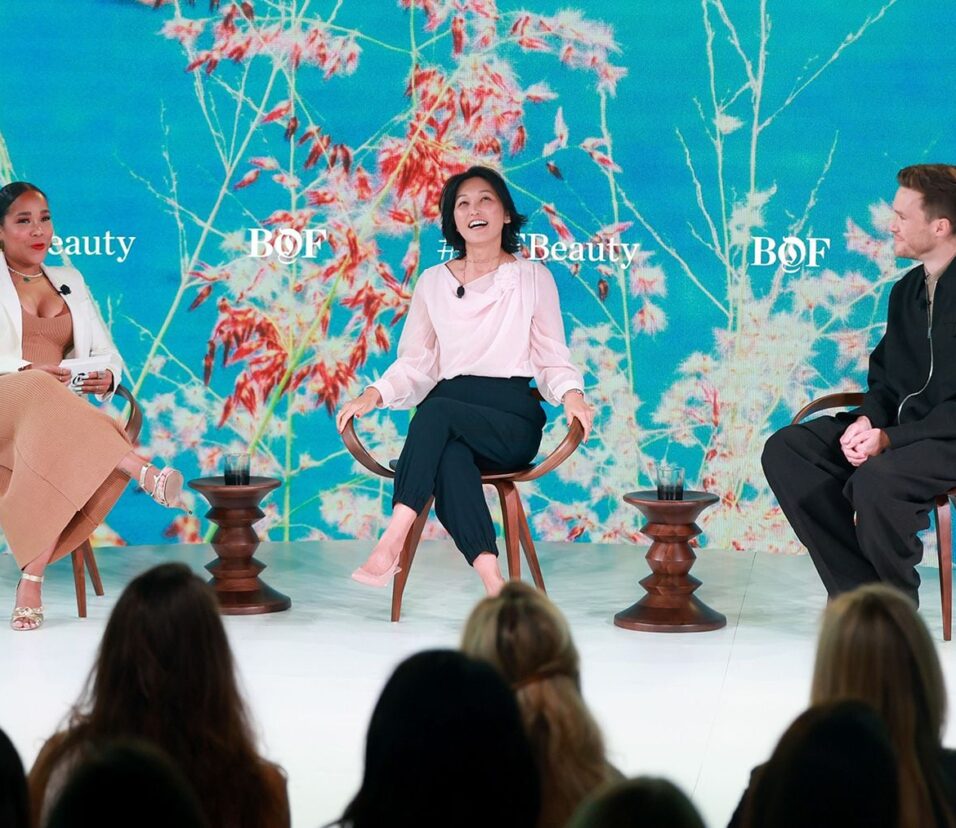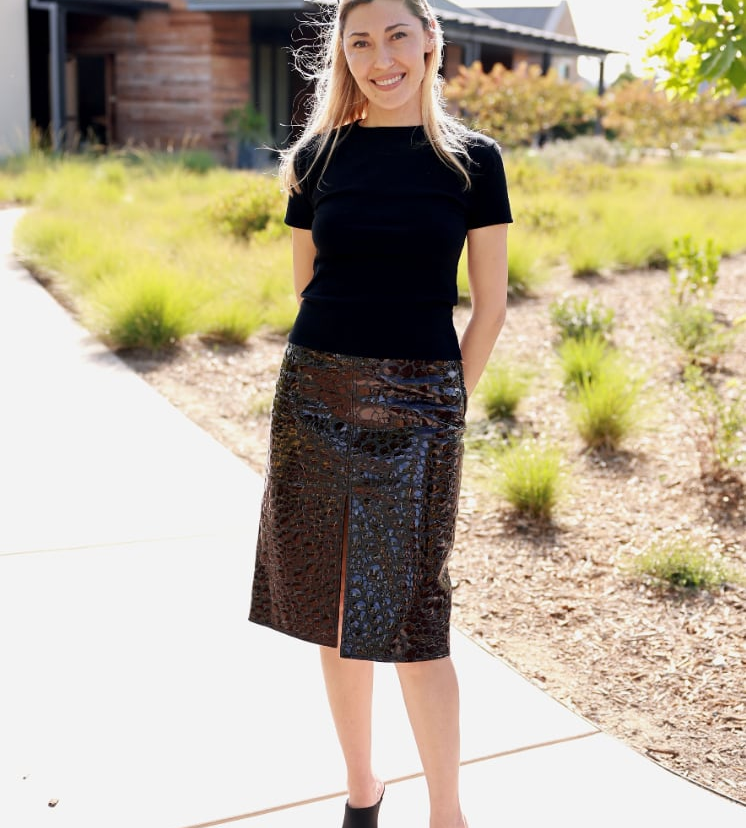Inside Thailand’s Booming Beauty Sector

For years, global shoppers have bought into the sheet masks, snail mucin and rice water cleansers that made J-beauty and K-beauty products famous. And while the Japanese and South Korean brands behind those export waves are in a different league, some of their Chinese peers have also started gaining overseas fans with intricately packaged yet affordable C-beauty products. Now, brands from Thailand believe it’s T-beauty’s time to shine.
Two companies leading the charge in the T-beauty industry are SSUP Holdings-owned Oriental Princess, which focuses on natural ingredients, and Better Way-owned Mistine, one of the country’s first direct-to-consumer beauty brands.
Mistine has already made its mark outside the region, according to Euromonitor research analyst Rachel Kok. Having gained ground before and during the pandemic, the brand is now “growing at breakneck speed in its main export market China,” where it has found favour through its sunscreens among China’s price-conscious Gen-Z consumers, who trust products capable of withstanding Thailand’s high temperatures.
Mindd Nuchata Sukkang, a Bangkok-based makeup artist whose clients include actors Atthaphan Phunsawat and Louis Vuitton favourite Urassaya Sperbund, stocks her kit with a mishmash of Western, Korean, Chinese and Thai products. Mistine and Cathy Doll are among her favourite T-beauty brands alongside 4U2, a label known for its wide assortment of cheap and cheerful products.
While Thai shoppers are “open to try new things,” they are also budget-conscious due to the country’s sluggish economy, explains Virithipa Pakdeeprasong, a local model and TV personality who founded the beauty brand Sewa in 2017.
The entrepreneur, who manufactures products in South Korea but localised her line to suit the Thai market and climate, notes that most local brands play into this consumer mindset by selling products in smaller sample-sized packaging — at a fraction of the cost of equivalent foreign products — to encourage brand switching. “Sewa sells millions of these [sample-size products] every year,” Pakdeeprasong said.
Cathy Doll, owned by 27-year-old, 15-brand strong Thai beauty conglomerate Karmart, is another brand known for its smaller, affordable items, and has its eyes set on overseas markets including mainland China, Taiwan and the Middle East after expanding into Japan.
But T-beauty’s potential for global growth is down to more than just low prices and weather-resistant products. It also has cultural capital thanks to an association with Thailand’s entertainment industry, which produces content and stars that are increasingly popular across Asia.
Brands with cultural capital
Thailand’s relatively progressive stance on social issues like LGBT rights and gender, including expressions of masculinity, adds to its popularity as an international tourist destination. It also helps to make the country’s creative industries, which often feature such storylines, increasingly popular abroad.
The country’s queer romance dramas, a genre known as Boys’ Love (BL), have become a hot cultural export attracting legions of male and female fans, and inspiring global fashion and luxury brands to partner with their lead actors. Following Christian Dior’s appointment last year of “Mile” Phakphum Romsaithong and “Apo” Nattawin Wattanagitiphat as brand ambassadors, Vachirawit Chivaaree and Metawin Opas-Iamkajorn have inked deals with Calvin Klein and Prada, respectively.
Male heartthrobs aren’t the only ones serving as a conduit for local beauty businesses and trends. One example is actress and Gucci Beauty face Davikah Hoorne’s recent photoshoot, where she wears quintessential T-beauty makeup styles and a floral take on a traditional Thai headdress and accessories.
Sukkang, for one, has helped shape the ‘T-beauty look.’ For women, she cherry-picks elements from Western beauty alongside features from K-, J- and C-beauty, before melding the softness, youthful base and detailed eye looks of the East with shading and bold colours from the West.
The author has shared an Instagram Post.You will need to accept and consent to the use of cookies and similar technologies by our third-party partners (including: YouTube, Instagram or Twitter), in order to view embedded content in this article and others you may visit in future.
“When Thai celebrities are in front of the camera, people focus on their makeup. People notice that we have a Thai style,” said Sukkang. “I get messages from a lot of fans, international ones too. When I post their pictures, people are always asking me what I use.”
Chayapat Ratchatawipasanan, senior beauty and personal care analyst at Mintel, cites the ‘swai meiku’ T-beauty makeup trend (“swai” meaning beautiful in Thai, and “meiku” meaning makeup in Japanese), which has already gained traction in Japan, where bloggers replicate actors’ looks and recommend brands like Cathy Doll to their viewers.
T-beauty trends have even greater influence closer to home in Southeast Asian markets like Vietnam, Cambodia, Laos and Myanmar, thanks in part to the availability and influence of Thai media in the region.
The growing popularity of T-beauty brands across Asia has made their home market an increasingly important one for global players to invest in and monitor for trends. As Thai brands start gearing up for global expansion, the qualities that give them an edge back home often serve as lessons for foreign brands looking to enter or expand in Thai market.
Ample room for growth
Thailand’s relative maturity as a luxury market and its popularity as a global tourism hub render it a vibrant space for both local and foreign beauty players. Market scale and growth rates are also important considerations.
According to Euromonitor, the Thai beauty and personal care market was worth $6.6 billion in 2022, marking a 9.2 percent uptick from 2021, and a full recovery following a pandemic-induced contraction the previous year.
The growth trajectory doesn’t just reflect the performance of big multinationals, according to Euromonitor’s Kok. “This includes local brands that have found their competitive edge at comparatively lower price points in a market dominated by foreign and imported brands,” she said.
Though Thailand lags mature beauty markets like South Korea ($12.9 billion) and Japan ($30.1 billion), regional giant China ($80 billion in the mainland and $3.2 in Hong Kong) and India ($16 billion), it’s ahead of all Southeast Asian countries except Indonesia ($7.6 billion). Further afield, Australia ($7.9 billion) is only marginally larger.
The author has shared an Instagram Post.You will need to accept and consent to the use of cookies and similar technologies by our third-party partners (including: YouTube, Instagram or Twitter), in order to view embedded content in this article and others you may visit in future.
While Thailand boasts a skincare market that is almost the same size as Indonesia (despite the latter having four times the population as the former), Thailand’s spending per capita is almost four times higher, says Ratchatawipasanan.
When it comes to colour cosmetics, Thailand’s market was half Indonesia’s size, but the former’s spending per capita was almost double the spending in the latter. “This shows that the beauty market in Thailand still has more room to grow, especially in premium and luxury cosmetics categories,” explained Ratchatawipasanan.
Chayapa Rattanadej, the country general manager of Sephora Thailand, echoes that sentiment, revealing that Thailand was one of the fastest-growing markets for the French retailer in 2023.
“Due to our climate, one of the categories that do very well in Sephora Thailand is sun-care, anti-pollution and acne care for sensitive skin,” said Rattanadej. “We see Thai beauty brands potentially levelling up in Asia given these beauty essentials are nearly universal in our region.”
Though it’s better known for bringing global names like Fenty Beauty and Rare Beauty to Thailand, Sephora is also tapping into interest in T-beauty by stocking the likes of skincare brands FYNE, Delphini and Skinsyrip. The retailer has observed growing demand for Thai products from international tourists who specifically ask for brands exclusive to its local outposts, Rattanadej said.
Beyond Western multi-brand retailers like Sephora, which has nearly a dozen branches in malls across Greater Bangkok and an outlet in Phuket, Thai brands can also be found nationwide at both local boutiques and drugstore chains like Watsons and Matsumoto Kiyoshi that hail from other Asian countries.
Domestic e-commerce upstarts like Konvy, which carries a diverse range of local and global beauty brands and in January announced a $11 million fundraising round from New Day Ventures, Alibaba International Digital Commerce Group, and Insignia Ventures Partners, are also making their mark. Konvy’s CEO Qinggui Huang said in a statement that the capital would power its expansion across the region, starting with the Philippines.
Thinking global and local
One characteristic of Thailand’s beauty market that is especially true from the perspective of foreign brands is that it is fragmented.
Despite the growth of and increasing consumer trust in domestic players, global conglomerates like L’Oréal Group, Unilever, Procter & Gamble and Estée Lauder Companies are still dominant in the crowded market, which in recent years has also witnessed the rise of rivals from South Korea and Japan.
While Thai shoppers steer toward local brands for the lower price tags, they still have a strong preference for overseas names, which are “perceived as [boasting] superior quality,” according to Ratchatawipasanan, who notes the country of origin as a “crucial factor” in selling products to Thais. “This inclination is evident in various marketing campaigns,” he said, citing Thai brands that strategically adopt foreign-sounding identities to tap into that goodwill.
Contrary to some of the localisation strategies that work elsewhere, in Thailand “emphasising the country of origin or explicitly highlighting [the brand’s] foreign identity could prove more advantageous than transitioning to a local image,” he said.
Ratchatawipasanan acknowledges the need for most foreign brands to maintain premium price tags even if more competitive pricing strategies might help them to grow sales. But there are other ways foreign brands can cater to local needs without compromising their positioning.
For one, a sharper focus on products geared toward an older demographic could be advantageous. Thailand is one of the world’s fastest aging societies, according to the World Health Organization, with Kasikorn Bank estimating that over 20 percent of its population will be older than 65 by 2029. With that in mind, categories that global brands could explore more include anti-aging skincare, makeup for mature skin, and equivalent offerings across hair care and body care.
Sukkang also raises the popularity of personal colour analysis, which most T-beauty brands mastered early on. “Around 70 or 80 percent of Thai people have yellow, warm undertones [and] they’re very [aware of] this [when choosing suitable products],” said Sukkang. “Baby pink [lipstick] was popular ten years ago, for example, but it won’t sell now because people know they need the right palette for their skin tone.”
“If you’re a global brand, you need to focus on things like that.”






Leave feedback about this